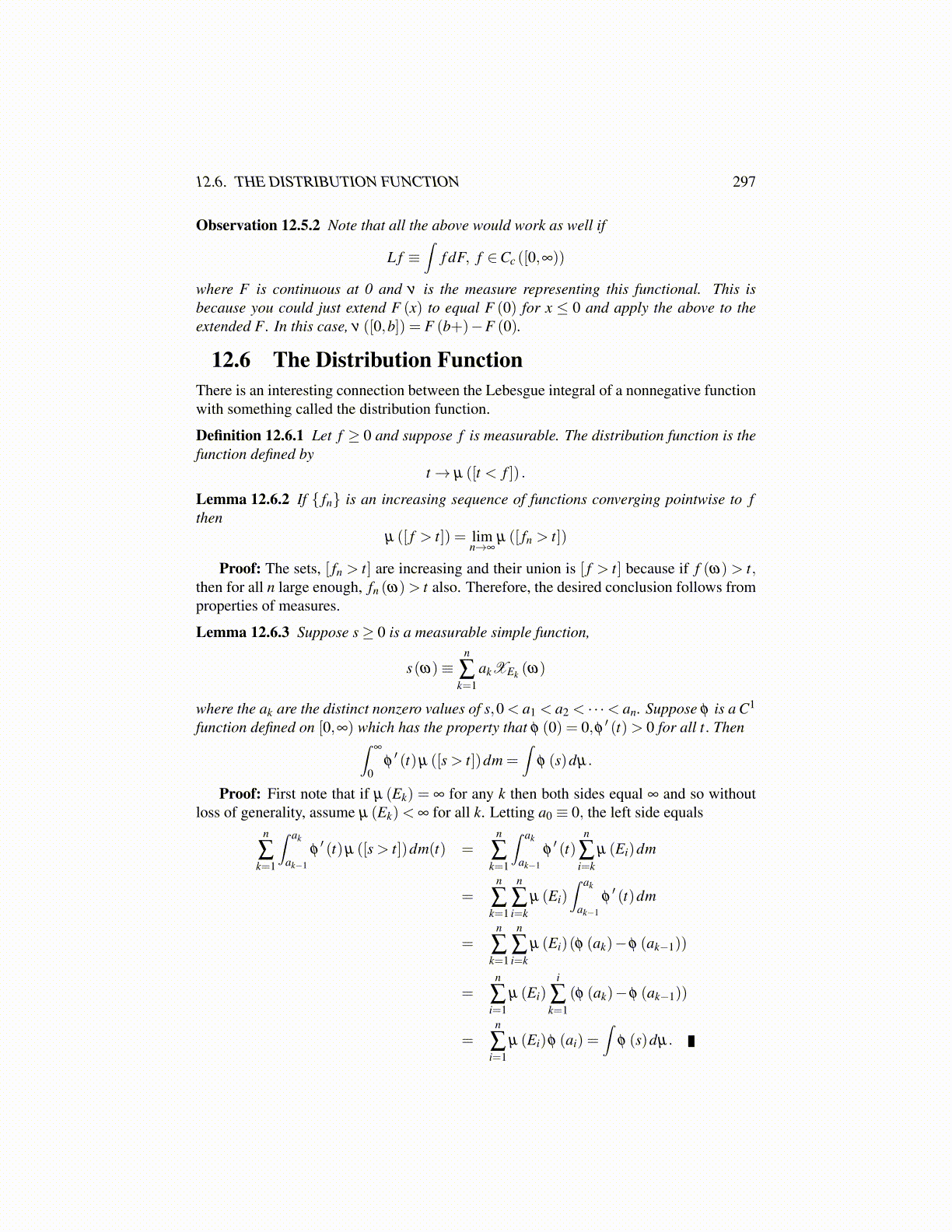
12.6. THE DISTRIBUTION FUNCTION 297
Observation 12.5.2 Note that all the above would work as well if
L f ≡∫
f dF, f ∈Cc ([0,∞))
where F is continuous at 0 and ν is the measure representing this functional. This isbecause you could just extend F (x) to equal F (0) for x ≤ 0 and apply the above to theextended F. In this case, ν ([0,b]) = F (b+)−F (0).
12.6 The Distribution FunctionThere is an interesting connection between the Lebesgue integral of a nonnegative functionwith something called the distribution function.
Definition 12.6.1 Let f ≥ 0 and suppose f is measurable. The distribution function is thefunction defined by
t→ µ ([t < f ]) .
Lemma 12.6.2 If { fn} is an increasing sequence of functions converging pointwise to fthen
µ ([ f > t]) = limn→∞
µ ([ fn > t])
Proof: The sets, [ fn > t] are increasing and their union is [ f > t] because if f (ω) > t,then for all n large enough, fn (ω)> t also. Therefore, the desired conclusion follows fromproperties of measures.
Lemma 12.6.3 Suppose s≥ 0 is a measurable simple function,
s(ω)≡n
∑k=1
akXEk (ω)
where the ak are the distinct nonzero values of s,0 < a1 < a2 < · · ·< an. Suppose φ is a C1
function defined on [0,∞) which has the property that φ (0) = 0,φ ′ (t)> 0 for all t. Then∫∞
0φ′ (t)µ ([s > t])dm =
∫φ (s)dµ.
Proof: First note that if µ (Ek) = ∞ for any k then both sides equal ∞ and so withoutloss of generality, assume µ (Ek)< ∞ for all k. Letting a0 ≡ 0, the left side equals
n
∑k=1
∫ ak
ak−1
φ′ (t)µ ([s > t])dm(t) =
n
∑k=1
∫ ak
ak−1
φ′ (t)
n
∑i=k
µ (Ei)dm
=n
∑k=1
n
∑i=k
µ (Ei)∫ ak
ak−1
φ′ (t)dm
=n
∑k=1
n
∑i=k
µ (Ei)(φ (ak)−φ (ak−1))
=n
∑i=1
µ (Ei)i
∑k=1
(φ (ak)−φ (ak−1))
=n
∑i=1
µ (Ei)φ (ai) =∫
φ (s)dµ.